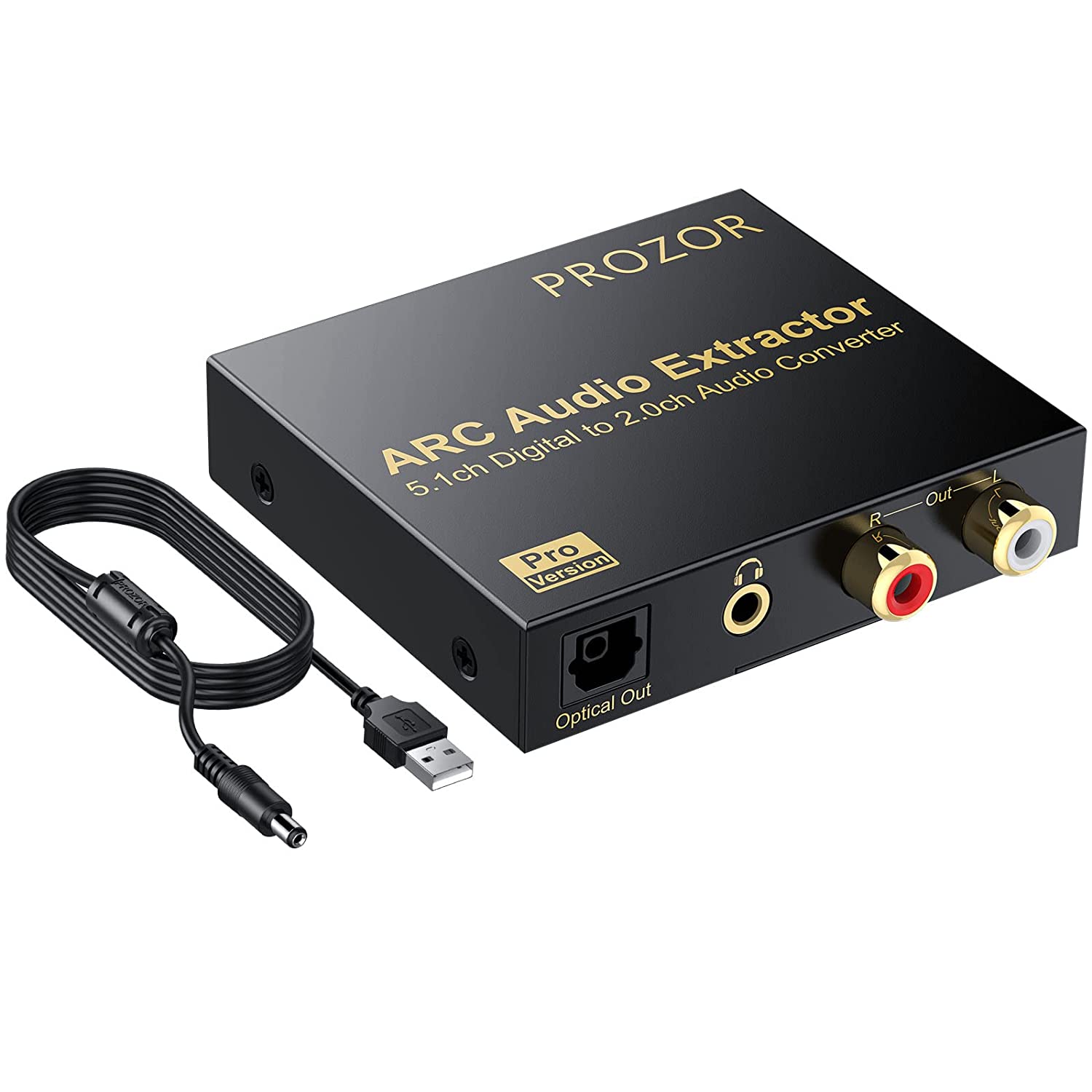I have a LG oled C2 and was really disappointed with the sound via toslink out to the optical input of my Peachtree audio decco65 (stereo amp) I had audible dropouts every few seconds.
In the end I fixed it (sort of) with a prozor PRR025 eARC HDMI audio extractor. From the prozor I have a toslink to the same optical input of the Peachtree. Somehow this thing shows up on the TV as a Panasonic soundbar, but it works without dropouts and sound quality is quite reasonable.
Edit: this is the prozor

 prozoreu.com
prozoreu.com
However if I would like to improve still, how should I accomplish that? I guess the toslink out of the C2 TV is a no go as that signal is just very poor. Are there better stereo HDMI audio extractors on the market that would give an improvement?
In the end I fixed it (sort of) with a prozor PRR025 eARC HDMI audio extractor. From the prozor I have a toslink to the same optical input of the Peachtree. Somehow this thing shows up on the TV as a Panasonic soundbar, but it works without dropouts and sound quality is quite reasonable.
Edit: this is the prozor

PROZOR 192KHz DAC Converter ARC Audio Extractor
PROZOR 192KHz DAC Converter ARC Audio Extractor, HDMI ARC Audio Extractor Support 5.1ch Digital ARC Audio to Analog Stereo Audio RCA L/R Optical and 3.5mm Jack ARC Audio Adapter for TV
 prozoreu.com
prozoreu.com
However if I would like to improve still, how should I accomplish that? I guess the toslink out of the C2 TV is a no go as that signal is just very poor. Are there better stereo HDMI audio extractors on the market that would give an improvement?
Last edited:
